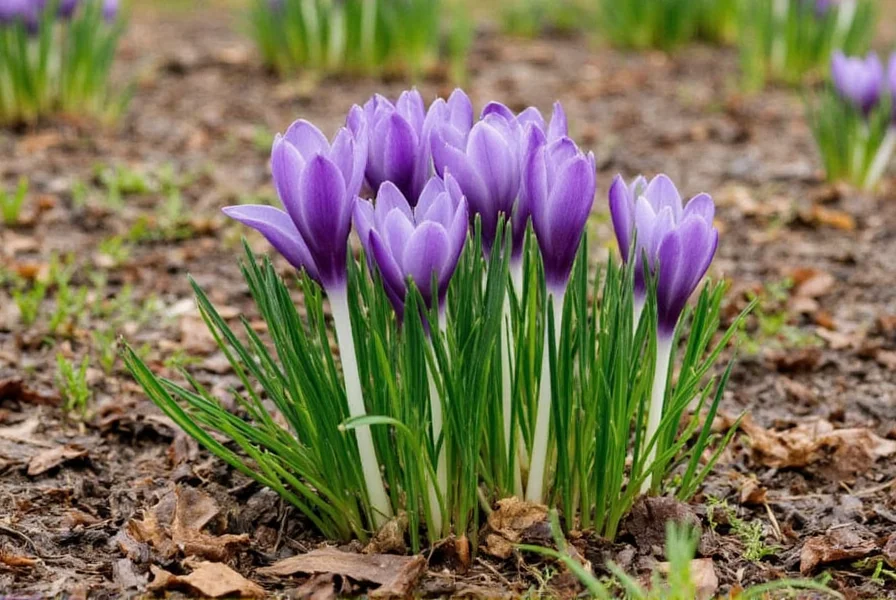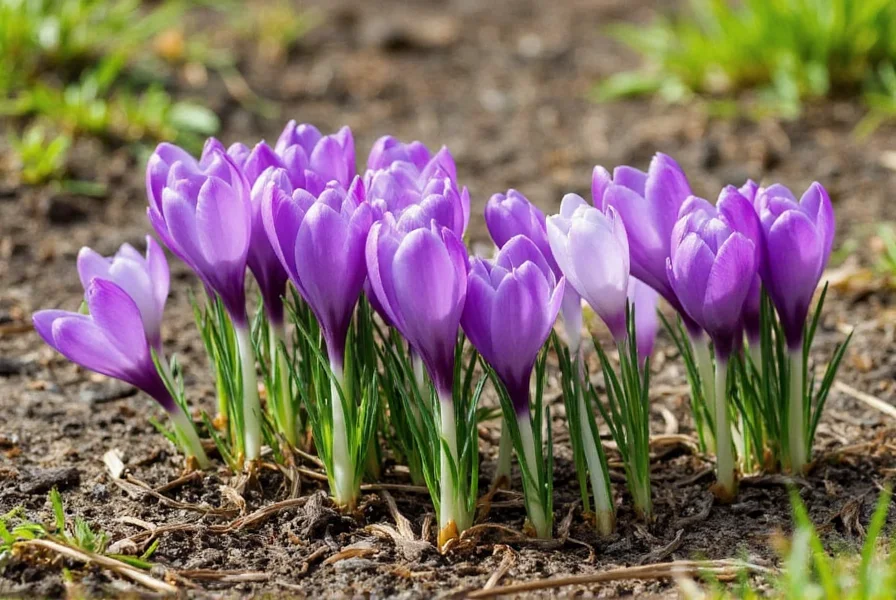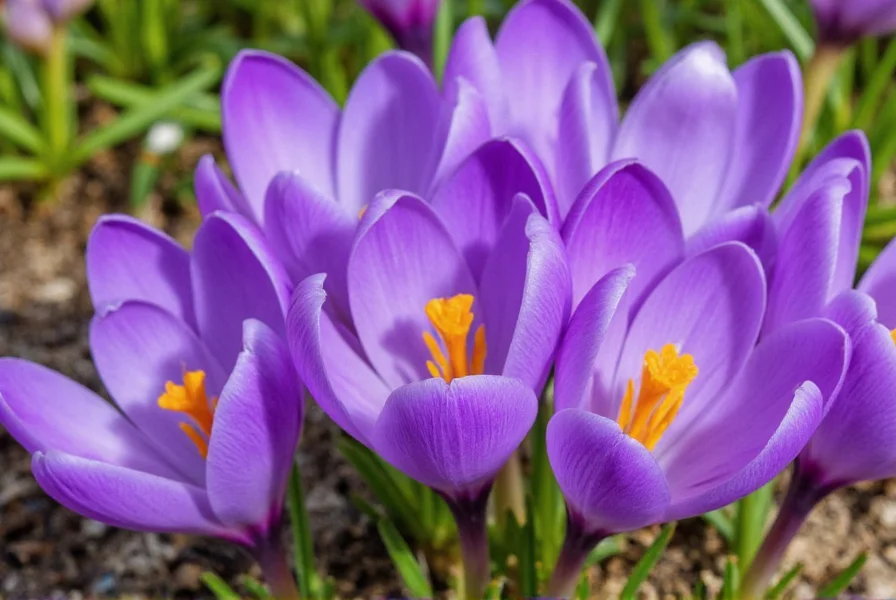Understanding Crocus Sativus and Its Unique Growing Requirements
Crocus sativus, commonly known as the saffron crocus, is a fall-blooming perennial that produces the world's most expensive spice. Unlike most crocus varieties, this sterile triploid reproduces only through corm division, making proper planting technique crucial for successful cultivation. The plant's value lies in its delicate red stigmas, which must be hand-harvested at first light when flowers open.

Essential Climate and Soil Conditions for Growing Saffron Crocus
Successful saffron cultivation depends on replicating the Mediterranean climate where Crocus sativus naturally thrives. The plant requires distinct seasonal patterns: hot, rain-free summers for dormancy, followed by cool, moist autumn conditions that trigger flowering.
| Factor | Optimal Range | Notes |
|---|---|---|
| Temperature | 60-70°F (15-21°C) during growth | Requires summer dormancy at 86-104°F (30-40°C) |
| Soil pH | 6.0-8.0 | Ideal range is 6.5-7.5 for maximum nutrient uptake |
| Soil Type | Well-draining loam | Add 30% sand or perlite to heavy soils |
| Sun Exposure | Full sun (6+ hours) | Essential for flower production and corm development |
Step-by-Step Guide to Planting Crocus Sativus
Follow these precise steps for successful saffron crocus establishment:
1. Selecting Quality Corms
Choose firm, plump corms measuring 2.5-3.5 cm in diameter. Larger corms produce more flowers in the first season. Purchase from reputable suppliers specializing in saffron cultivation to ensure authentic Crocus sativus varietals. Avoid corms showing signs of mold or soft spots, which indicate potential rot issues.
2. Soil Preparation
Prepare planting beds 2-3 weeks before planting by incorporating:
- 3-4 inches of well-rotted compost
- 1 inch of coarse sand or perlite for drainage
- Organic bulb fertilizer (5-10-10 NPK ratio)
Ensure soil drains freely - standing water causes immediate corm rot. Raised beds (6-8 inches high) work well in regions with heavier rainfall.
3. Planting Technique
Plant corms in late summer to early fall (August-September in Northern Hemisphere):
- Space corms 4-6 inches apart in rows
- Plant at 4-6 inch depth (deeper in sandy soils, shallower in clay)
- Position corms with pointed end facing upward
- Cover with soil and water thoroughly
Seasonal Care Calendar for Saffron Crocus
Maintain proper care throughout the year with this seasonal guide:
Fall Flowering Period (October-November)
When flowers emerge, monitor plants daily at dawn. Harvest flowers immediately upon opening by gently grasping the bloom base and twisting. Remove stigmas within 15 minutes of picking using tweezers or fingernails. This critical timing ensures maximum saffron quality and prevents pollen contamination.
Winter Dormancy (December-February)
After flowering, the plant enters vegetative growth. Water sparingly during mild winters, only when top 2 inches of soil dry out. In regions with freezing temperatures, apply 2-3 inches of mulch after first frost to protect corms while allowing soil to breathe.
Spring Growth Phase (March-May)
As foliage emerges, increase watering to keep soil slightly moist but never saturated. Apply balanced liquid fertilizer every 3-4 weeks. This phase builds energy for next season's flowers - never cut back foliage until it naturally yellows.
Summer Dormancy (June-August)
When foliage dies back completely, reduce watering to zero. In humid climates, consider lifting corms for summer storage in a cool, dry place with good air circulation. In arid regions, leave corms in ground but ensure no summer irrigation reaches the planting area.
Harvesting and Processing Saffron Stigmas
Proper harvesting technique directly impacts saffron quality:
- Pick flowers at first light when fully open
- Remove three red stigmas carefully using fingernails or tweezers
- Spread stigmas in single layer on mesh screen
- Dry at 140°F (60°C) for 12-18 hours until brittle
- Store in airtight container away from light
Yield expectations: Mature plants produce 1-3 flowers per corm annually. Each flower yields approximately 0.03 grams of dried saffron. Expect 5-10 grams per 100 corms in established plantings. Commercial growers typically achieve 0.5-1.5 kg per acre after plants mature.
Troubleshooting Common Crocus Sativus Growing Challenges
Address these frequent issues with proven solutions:
Poor Flower Production
Cause: Inadequate summer dormancy, improper planting depth, or nutrient imbalance
Solution: Ensure complete summer dry period, verify planting depth matches soil type, and apply potassium-rich fertilizer in spring
Corm Rot
Cause: Excessive moisture during dormancy periods
Solution: Improve drainage with sand amendment, plant in raised beds, and avoid summer watering
Low Saffron Quality
Cause: Delayed harvesting or improper drying techniques
Solution: Harvest at dawn, process stigmas within 15 minutes, and dry at precise 140°F temperature

Advanced Techniques for Maximizing Saffron Yield
Experienced growers use these methods to increase production:
- Corm division: Separate offsets every 3-4 years during summer dormancy to rejuvenate plantings
- Microclimate creation: Use south-facing slopes with stone mulch to increase soil temperature
- Nutrient management: Apply wood ash in spring for potassium and trace minerals essential for flower development
- Water stress technique: Withhold water for 2 weeks before expected flowering to stimulate bloom production
Frequently Asked Questions About Growing Crocus Sativus
How long does it take for Crocus sativus to produce harvestable saffron after planting?
Crocus sativus typically flowers 6-8 weeks after planting. First harvest occurs in the fall following summer planting. Maximum yields develop over 3-4 years as corms multiply and mature. Expect minimal harvest in year one, with production increasing annually as the planting establishes.
Can I grow saffron crocus in containers or is in-ground planting necessary?
Yes, Crocus sativus grows well in containers with proper drainage. Use pots at least 8 inches deep with multiple drainage holes. Fill with sandy potting mix and plant corms 4 inches deep. Container growing offers advantage in controlling soil moisture during dormancy periods, which is critical for preventing rot. Move containers to sheltered location during winter in cold climates.
What are the most common pests that affect saffron crocus and how can I prevent them?
Rodents and birds pose the greatest threat to saffron crocus plantings. Squirrels and mice often dig up corms, while birds may damage emerging flowers. Prevent damage by installing wire mesh below planting areas and using bird netting during flowering season. In humid climates, watch for fungal diseases by ensuring excellent drainage and avoiding overhead watering.
How do I know when my saffron is properly dried and ready for storage?
Properly dried saffron stigmas should be brittle enough to snap cleanly when bent. They'll lose about 80% of their fresh weight during drying. Test by placing a few strands in water - high-quality dried saffron releases color gradually over 15-20 minutes. Store in airtight, light-proof containers at cool room temperature. Properly dried saffron maintains potency for 2-3 years.
Is growing Crocus sativus economically viable for small-scale production?
Small-scale saffron production can be economically viable with proper management. At current market prices ($5,000-$10,000 per pound), even modest harvests generate significant value. A 100-square-foot plot with 100 corms can yield 5-10 grams annually (worth $25-$50). Success requires meticulous harvesting and processing. Many growers supplement income by selling corms to other enthusiasts as plantings multiply over time.











 浙公网安备
33010002000092号
浙公网安备
33010002000092号 浙B2-20120091-4
浙B2-20120091-4